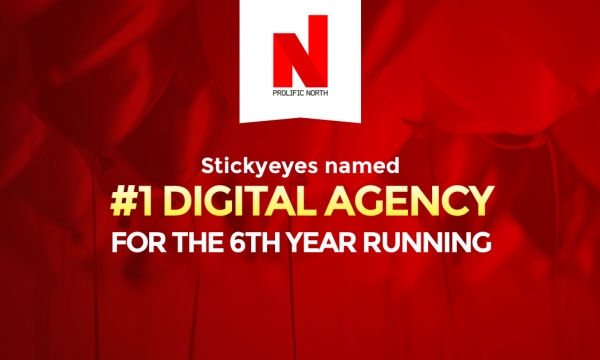Getty Images, the world’s largest picture agency, has rocked the photography industry by licencing its extensive library of imagery to bloggers and social media users, all for the grand price of…nothing. The agency claims that the decision was taken to reduce the effect of copyright infringement, whilst also ensuring that both the photographers and agency itself benefit from the increased use of its content.
But what will be the long-term impact on Getty and how could it change the way publishers will work? With this in mind, below are five problems that publishers and bloggers must consider.
A wealth of imagery, now legally at your disposal.
The 35million images in question, which come from the Getty and Agence France-Presse (AFP) editorial archives, are now available to users of social networks and writers of blogs. The libraries are bursting with photographs from the most significant news, sporting and historical events and bloggers who decide to make use of the service can expect to see something like this:
Whilst on the surface this decision may seem crazy, the thought process behind it seems to be one of “if you can’t beat them, join them”. With library sizes growing daily, it becomes harder and harder for agencies to enforce their copyright. The majority of this infringement, which could occur due to deliberate theft or a misunderstanding of the often complex copyright laws, tends to come from the very people Getty have now made its library available to.
Instead of trying to fight a battle that it couldn’t win, Getty has decided to embrace its users in an attempt to monitor and monetise the problem.
Not the type of embed you might be expecting.

With the likes of YouTube and Soundcloud embeds being rife across the internet, understanding the embedding of images shouldn’t be difficult.
However, Getty is not following the same style of embedding as these other media publishers, it won’t provide users with multiple versions of the image, such as a thumbnails, instead it will offer the content in an iFrame.
Traditionally video, audio, or map content is the focus of the copy and as such is not usually featured elsewhere. Images however often appear beyond the body of the content. Imagery is often used to encourage interest in the content through a form of visually tease, planted just above the call to action. With Getty’s lack of willing to provide free ‘customisable’ content, such as thumbnails, RSS feeds and blogs will likely go bare unless users are willing to invest in the additional licences.
“Not for commercial use”.
The embeds of images from Getty are defined as ‘not for commercial use’. However the terminology used is ambiguous, leaving it up to the interpretation of the reader or, should it ever get to the stage, a court.
The terms and conditions read as follows:
“You may only use embedded Getty Images Content for editorial purposes (meaning relating to events that are newsworthy or of public interest).
“Embedded Getty Images Content may not be used:
(a) for any commercial purpose (for example, in advertising, promotions or merchandising) or to suggest endorsement or sponsorship;
(b) in violation of any stated restriction;
(c) in a defamatory, pornographic or otherwise unlawful manner; or
(d) outside of the context of the Embedded Viewer.”
Put simply, a tech blogger wanting an image of the latest Samsung TV at CES is fine, but a TV retailer trying to sell Samsung’s latest offering, is not so fine.
As branded editorial-esque content becomes more prevalent, where does the restrictions of this “not for commercial use” start and end?
It has been confirmed by Getty that even if a blog hosts ads, it will not exclude it from taking advantage of this service. Getty believes that whilst NFP news sites, including local news blogs up to the likes of the BBC and Huffington Post, are allowed to use the service, these sites will continue business-as-usual using the existing core offering.
Beware, there are still laws in place.

Many bloggers will be keen to overhaul their blog with professional photographs now that they have access to them, particularly for various big events that used to incur big costs. But beware, this relinquishment of copyright licences is not so black and white.
Plenty of football bloggers and sporting fanzine editors have already experienced the wrath of Football Data Co’s litigation department. Football Data Co is a rights management company that protects the rights of Premier League and Football League, with a remit ranging from the publishing of fixture lists through to monitoring the use of club branding and imagry. Plenty of football bloggers have received invoices totalling several thousands of pounds, simply for publishing their team's fixtures without an FDC licence.
As Getty releases its library to the public, it is more than likely that rights management companies will pay close attention to the development and be swift in protecting the property of those they represent. Bloggers need to be careful, particularly in the early stages, as they learn what is and what is not allowed.
Ads on your blog will become a more common sight.
YouTube has set the standard for pre-roll advertising with its embeds and, whilst it hasn’t been confirmed by Getty, it’s almost a certainty that the agency will be looking to monetise this new venture.
Bloggers and publishers will need to consider how this might affect their existing advertising model and weigh up the benefits against the possible implications to user experience.
Because the nature of embedding leaves Getty Images with full control of the content within iFrames, images can be taken down without notice. This could leave blogs and pages with blocks of empty space or the dreaded “media not found” messages.
As featured on:




